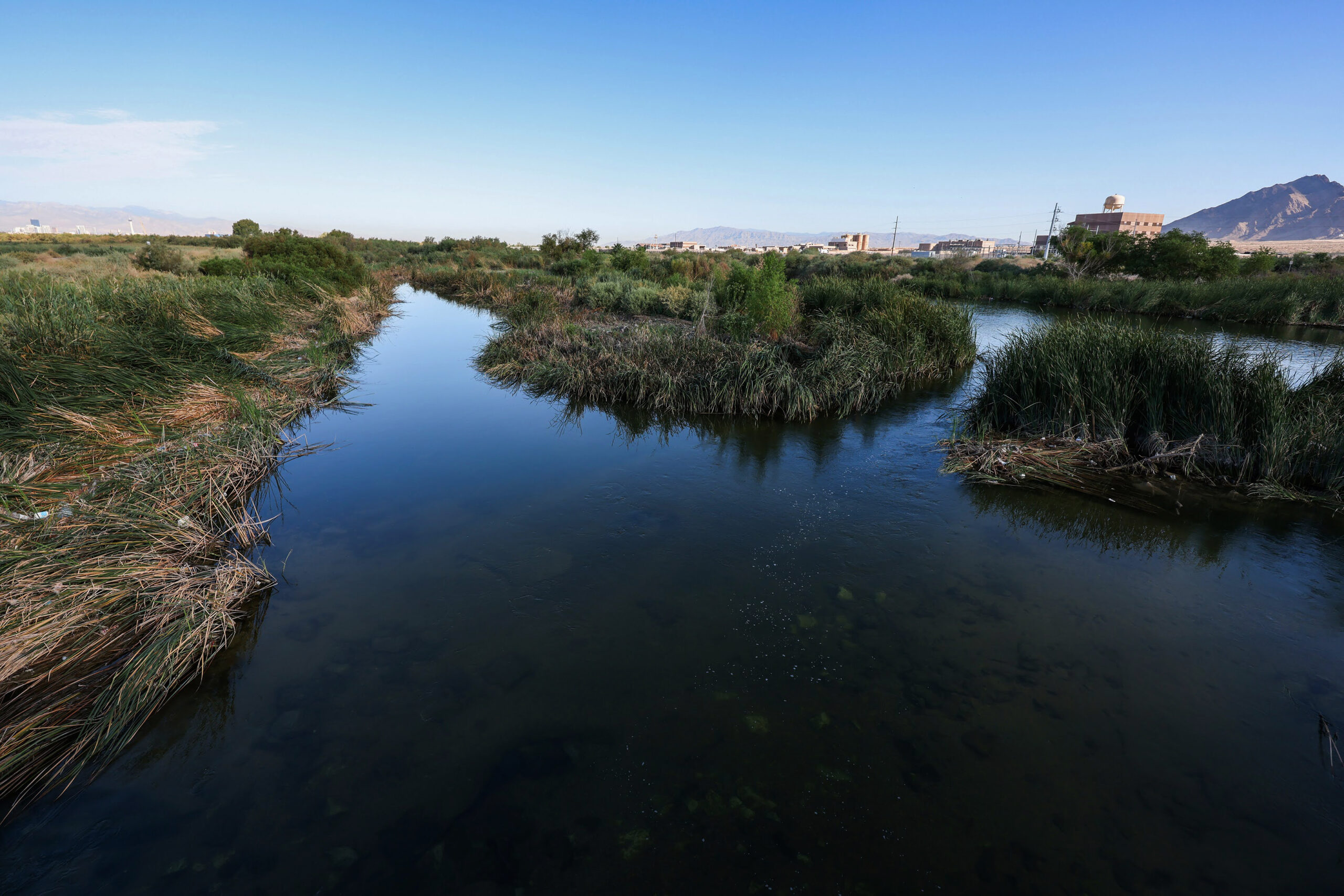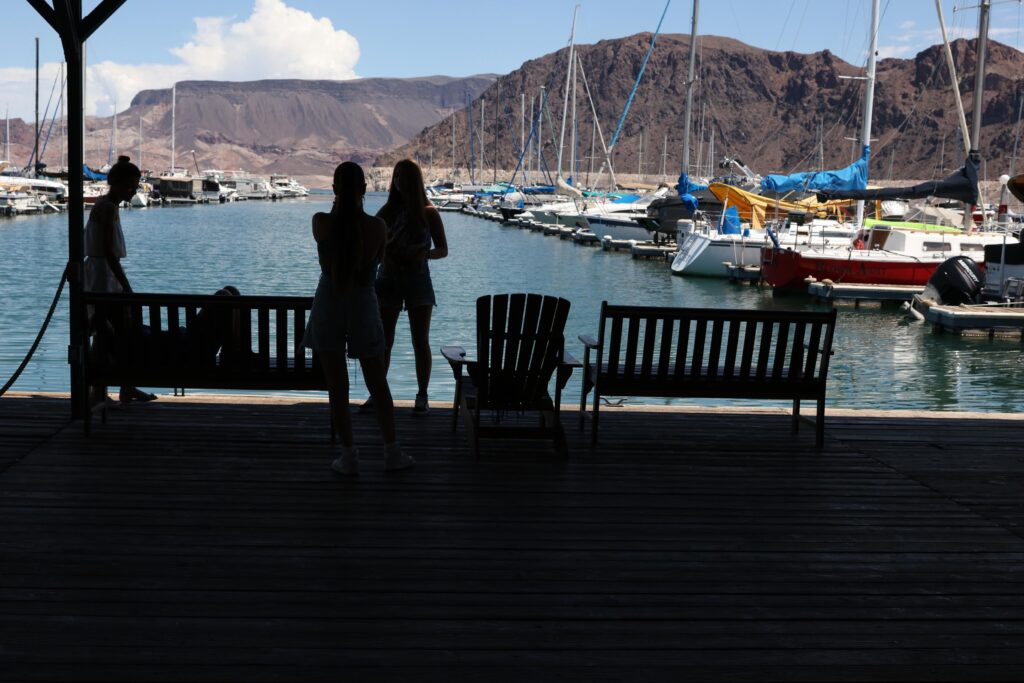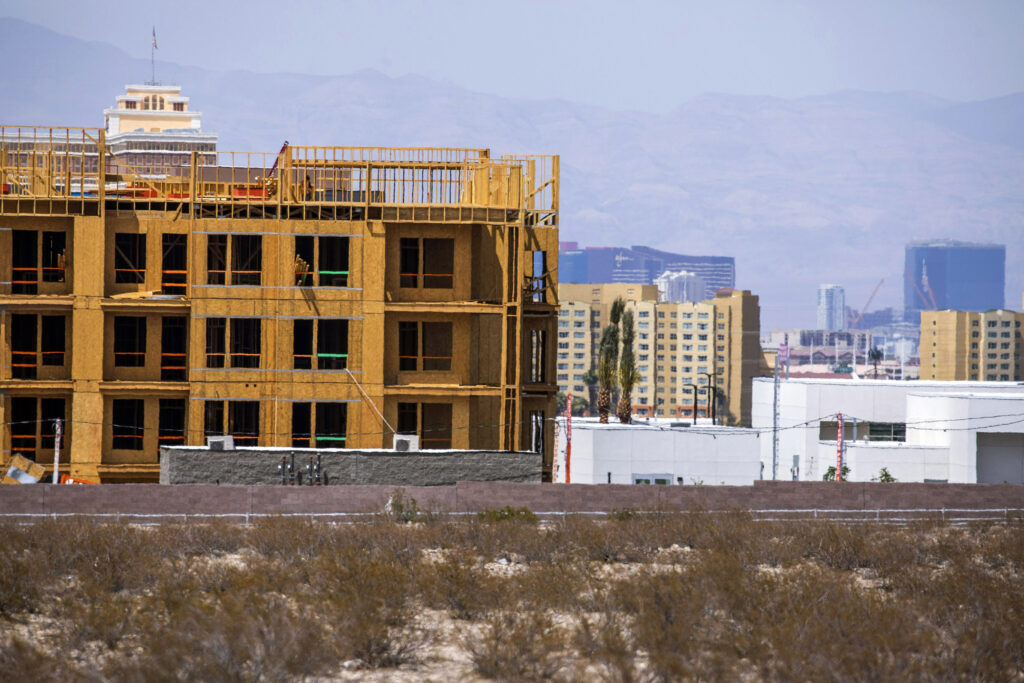Nevada again looks to deep conservation as the Colorado River's reservoirs dwindle

Editor's note: This story is part of a collaboration looking at the 100th anniversary of the Colorado River Compact. We partnered with the Associated Press, The Colorado Sun, The Albuquerque Journal, The Salt Lake Tribune and The Arizona Daily Star to tell stories from across the Colorado River Basin.
Only a few miles from the Las Vegas Strip, in the Mojave Desert, is an unlikely scene: A county park with walking trails and thick vegetation that surround a vibrant rush of flowing water.
Known as the Las Vegas Wash, the water running through this channel is a crucial part of how Nevada has managed to keep its net Colorado River use below its allocation, despite booming population growth and two decades of persistent drought, worsened by a changing climate.
Every time a shower or a faucet is turned on in Las Vegas, the water flowing down the drain is treated at wastewater plants and recycled. The treated water is discharged into the wash, which flows into Lake Mead, a declining Colorado River reservoir held back by the Hoover Dam. Once there, the water can be used for a second time, effectively increasing Nevada’s overall supply.
“It allows Las Vegas to exist in its present form,” said John Hiatt, a conservationist who sits on a coordination committee for the wash. “[Without it], we'd be half our size and really struggling.”
When the Colorado River Compact was negotiated in the early 1900s, only about 5,000 people lived in Clark County, home to Las Vegas. Few envisioned the massive growth that has turned the desert into a sprawling paved landscape of nearly 2.3 million people — and growing. Today, about 74 percent of all Nevadans live in Clark County, making it the state’s economic center.

The laws governing the Colorado River give Nevada the smallest cut of water: 1.8 percent, or just 300,000 acre-feet (an acre foot is the amount of water needed to fill an acre to a depth of one foot). The small share has meant Nevada has long had to live on a tight water budget and rely on conservation measures that are only now being considered by other Western states.
Nevada has one main Colorado River user: Las Vegas. It accounts for more than 90 percent of the state’s diversions, with additional water going to the Fort Mojave Indian Tribe, whose rights were recognized in a case known as Arizona v. California, and other water users in Nevada.
For decades, Las Vegas has relied on wastewater recycling and removing water-guzzling grass to stretch and conserve its small Colorado River share. But even with proactive management, Las Vegas, like other cities, faces challenges and uncertainties when it comes to future growth.
“We still have some room with the water resources we have today,” said Assemblyman Howard Watts, a Democrat who has worked on water issues for years, including in the Legislature. “But eventually we’re going to reach a point where we’re going to go past that limit and that’s when we really have to consider what a sustainable path is for Southern Nevada moving forward.”
Many of the Southern Nevada Water Authority’s future planning scenarios are premised on an ability to collaborate with other states to augment Las Vegas’s current supply. Yet negotiations over the Colorado River have become increasingly difficult for the seven states that rely on the shrinking river and its reservoirs, including Lake Mead, which has fallen to critically low levels.
Nevada, even though it has a small slice of the Colorado River, has a huge stake in those talks. Las Vegas is reliant on the Colorado River. It’s the source of about 90 percent of the city’s water supply. The remainder comes from a local groundwater aquifer, which was historically overused.
Any other water in Nevada is far away. For years, Las Vegas had looked to import rural eastern Nevada groundwater hundreds of miles away as a potential supply. But local water managers shelved the controversial plan in 2020 amid legal challenges and concerns about environmental impacts. While it still owns ranches in eastern Nevada, the water authority has said its focus is on supplementing its supply through collaborations, including a recycling project in California.
How Southern Nevada has managed to grow, thus far, on such a tight supply has everything to do with the Las Vegas Wash, which empties into Lake Mead. Colby Pellegrino, deputy general manager of the Southern Nevada Water Authority, described the natural stream as something of “a silent miracle,” helping Nevada operate one of the largest water reuse programs in the nation.
Through the Las Vegas Wash, recycled water flows back to Lake Mead. Each drop of water that is returned allows Nevada to divert an equivalent amount of water, while keeping its overall use within its 300,000 acre-foot allotment. Last year, Nevada diverted more than 480,000 acre-feet from Lake Mead, but it returned about half of that water for an overall use below its allotment.
Because nearly all indoor water in Southern Nevada is treated and returned to the wash, it has allowed Las Vegas to focus its conservation efforts on aggressive turf removal. This, combined with water recycling, has meant that Nevada has under-used its Colorado River apportionment.
This year, the state is currently forecast to use about 240,000 acre-feet of water, or 20 percent less than its 300,000 acre-foot allocation. Nevada, as a result, can easily absorb an 8 percent cut to its water supply next year without any significant changes to municipal water deliveries.
As for future growth, Pellegrino said “it depends on how we grow.”
“The future of our growth has to have the smallest water footprint possible,” she added.
Las Vegas is preparing for the realities of a shrinking river by incentivizing and requiring greater degrees of conservation — with a target goal of decreasing per capita water use from about 110 gallons per capita per day to 86 gallons per capita per day by 2035. The water authority’s plan includes a transition from evaporative cooling, pool size limits and prohibiting decorative turf.

Still, with only 1.8 percent of the Colorado River, Las Vegas cannot fix the problem on its own. In a recent letter, water authority General Manager John Entsminger called for swift cuts aimed at stabilizing the Colorado River’s reservoirs while longer-term agreements can be negotiated. The water authority has also pushed other states to consider climate change in long-term planning.
Hiatt, on the Las Vegas Wash Coordination Committee, came to Southern Nevada in the 1970s, when the population of Clark County was about 350,000 people. He said he is concerned about what a future might look like as climate change continues altering the river’s flows. If conserved water is only re-dedicated to new growth, he worries “we’re going to be in the same position of pushing against our allotment — and our allotment may be significantly lower than it is now.”
“It’s hard to believe anyone is going to come out with more water,” he added.
